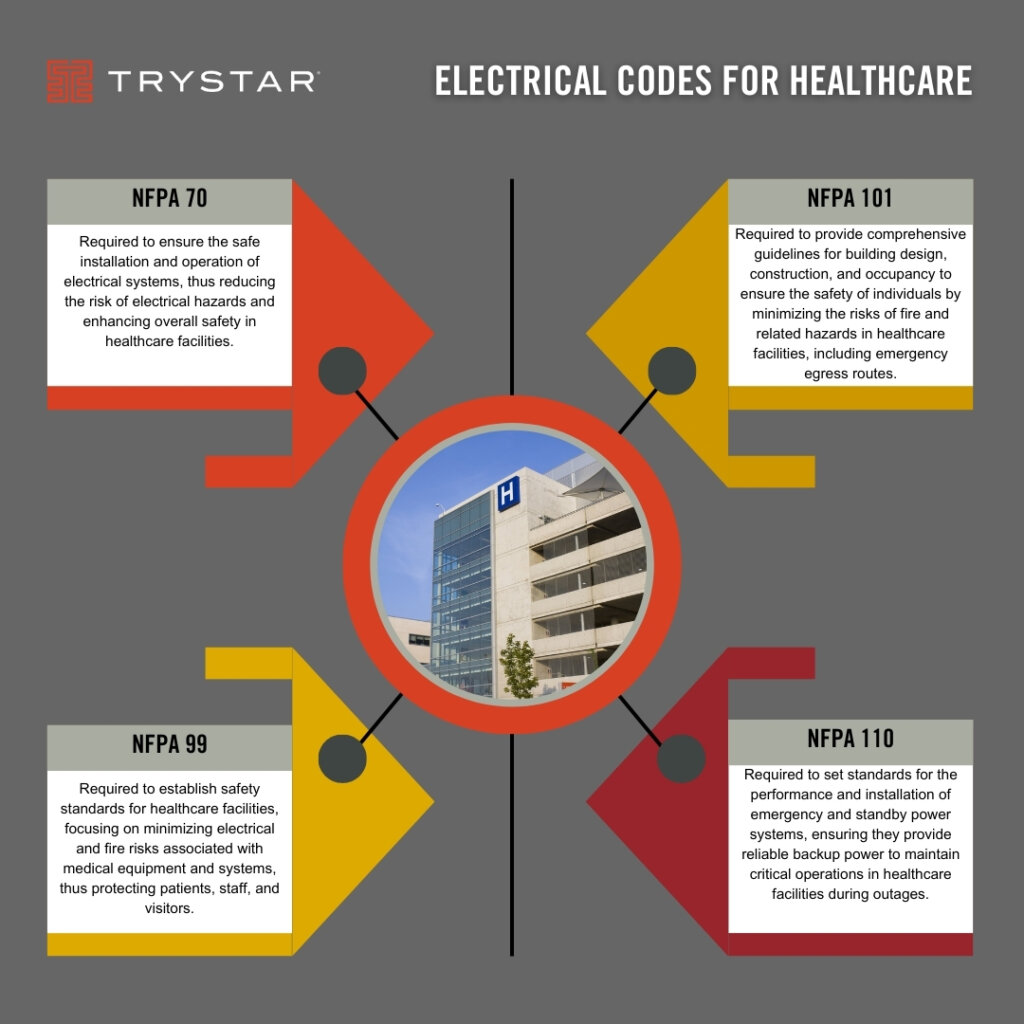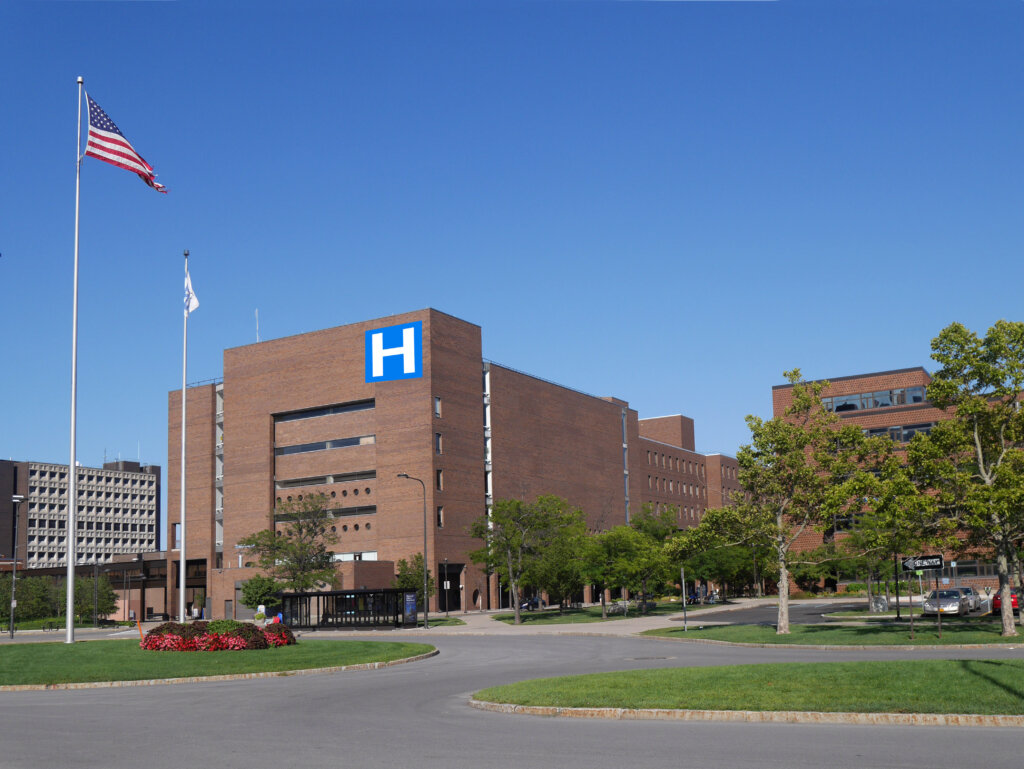Within today’s hospitals and healthcare facilities, the administration leaders, facility managers, electrical engineers, and compliance officers are among the professionals who must have an understanding of emergency power requirements and the electrical codes which must be met. Such knowledge is crucial … ensuring the safety and reliability of 24/7 critical medical operations and patient care, as well as adhering to and maintaining regulatory standards. The need for uninterrupted electrical power is non-negotiable. Electrical power resiliency guarantees that vital medical imaging and treatment modalities (e.g., MRI, CT, X-ray, and Linear Accelerator) operate seamlessly, and that patient care remains uncompromised … even during power outages.
This article explains three (3) specific concepts related to emergency power requirements in hospitals and healthcare facilities. Each plays a crucial role in ensuring operational continuity, patient safety, and regulatory compliance.
Electrical Code Compliance
Ensuring adherence to standards such as NFPA 70 (National Electrical Code), NFPA 99, NFPA 101 (Life Safety Code), and NFPA 110 is crucial for designing, implementing, and maintaining emergency power systems that meet stringent safety and reliability requirements.
Complying with each of these standards ensures that emergency power systems are manufactured, installed, and commissioned to the highest safety and reliability standards … thus minimizing the risk of power failures that could jeopardize patient care. These standards provide comprehensive guidelines for the installation, operation, and maintenance of electrical systems, enabling these systems to withstand emergencies (including natural disasters), and continue to support critical healthcare functions. Compliance not only enhances the safety of patients and staff but also ensures legal and regulatory obligations are met, protecting the facility from potential liabilities.

Seamless Power Transition
Pairing Generator Docking Stations with Automatic Transfer Switches is essential for ensuring a smooth transition to backup power during outages, minimizing disruptions to critical healthcare operations and strengthening the overall electrical infrastructure.
This pairing enables a seamless and rapid transition to backup power, ensuring that critical healthcare operations continue without interruption during power outages. This setup minimizes downtime and is crucial fo maintaining the functionality of life saving equipment, as well as essential systems related to patient safety and continuous patient care. By automating the switch from utility power to backup power, hospitals and healthcare facilities can respond swiftly to power disruptions, reducing the risk of operational delays and potential harm to patients.
Additionally, Load Banks help ensure that emergency power systems are in working order, and are used to test and maintain backup generators and single- and three-phase Uninterruptible Power Supplies (UPS). Regular load bank testing prepares facilities for a seamless transition by verifying that backup systems can handle full loads.
Continuous Power Supply
UPS’s are vital for providing immediate backup power to critical equipment, ensuring there is no interruption in power delivery until generators or other backup solutions are fully engaged. Bridging the gap between a power outage and the activation of backup generators, UPS’s prevent any disruption to critical medical equipment and systems, which is essential for maintaining patient safety and the continuity of healthcare services.
In addition to UPS’s, several other products and technologies support continuous power supply in hospitals and healthcare facilities, including:
- Battery Energy Storage Systems (BESS) provide a quick response to power interruptions and can sustain power for critical equipment until backup generators engage.
- Power Conditioners protect sensitive medical equipment from power anomalies such as voltage sags and surges, ensuring a clean electrical sinewave … which translates into stable power flow.
- Voltage Regulators maintain a steady voltage level to medical equipment, and protect against power anomalies such as under- or over-voltage irregularities that can interrupt continuous power supply.
- Emergency Lighting Inverters provide backup power to essential egress lighting systems within hospitals and healthcare facilities, ensuring that corridors, stairwells, operating rooms, and other critical areas remain illuminated during power outages.

Conclusion
Understanding emergency power requirements in healthcare facilities is not just a regulatory necessity, but a critical component of patient safety and operational excellence. Facility managers, engineers, and healthcare administrators are encouraged to prioritize electrical code compliance, seamless power transition, and a continuous power supply to ensure the safety and well-being of patients, maintain the integrity of critical medical operations, and uphold the facility’s reputation for reliability and excellence in healthcare delivery. By doing so, they contribute to a resilient healthcare environment that can confidently face any power-related challenges.
Connect with our team of Application Specialists to discuss your hospital or healthcare facility’s emergency power requirements, and to learn more about the electrical power solutions that are available!